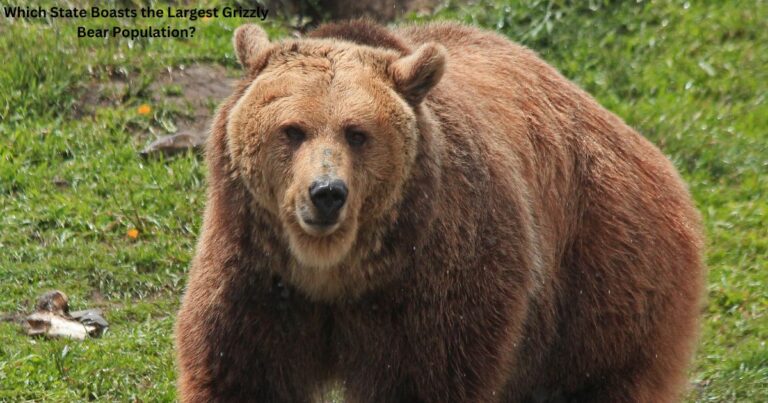
Introduction
Grizzly bears, known for their imposing size and strength, hold a unique place in the natural ecosystems of North America. These magnificent creatures are a symbol of wilderness, roaming forests, mountains, and valleys. But have you ever wondered which U.S. state boasts the largest population of grizzly bears? Understanding their habitat, population trends, and the challenges they face is essential to preserving these iconic animals.
The State with the Largest Grizzly Bear Population
Alaska stands as the undisputed home to the largest grizzly bear population in the United States. Often referred to as brown bears in coastal areas, grizzlies thrive across Alaska’s vast wilderness. The state is estimated to house over 30,000 grizzly bears, accounting for nearly 85% of the total grizzly population in the U.S.
Alaska’s expansive landscapes, including tundras, forests, and coastal regions, provide the ideal environment for grizzlies. The abundance of natural resources such as salmon, berries, and other food sources supports their large numbers.
Grizzly Bear Habitats in Alaska
Grizzly bears in Alaska occupy diverse habitats:
- Coastal Regions: In these areas, grizzlies feed heavily on salmon, making it a crucial food source during the summer months.
- Interior Forests and Tundras: These areas offer berries, roots, and small mammals, supporting grizzlies throughout the year.
- National Parks and Refuges: Protected areas like Denali National Park and Katmai National Park are famous for their grizzly populations, where visitors can witness these animals in their natural environment.
Why Alaska is Ideal for Grizzly Bears
Several factors make Alaska the best habitat for grizzly bears:
- Vast Wilderness: With its untouched forests and mountains, Alaska provides ample space for grizzlies to roam.
- Rich Food Supply: The abundance of salmon runs and vegetation offers grizzlies a stable diet.
- Low Human Impact: Compared to other states, Alaska has fewer urban developments, reducing human-wildlife conflicts.
Grizzly Bear Population in Other States
While Alaska leads in numbers, other states such as Montana, Wyoming, and Idaho also have notable grizzly bear populations. These states are part of the Greater Yellowstone Ecosystem, home to around 1,500 grizzlies. Conservation efforts in these areas aim to stabilize and grow their populations despite challenges like habitat loss and human conflicts.
Conservation Efforts for Grizzly Bears
Grizzly bears were once widespread across North America but faced severe population declines due to hunting and habitat destruction. Today, conservation programs are critical to their survival.
- Protected Areas: National parks and reserves ensure that grizzlies have safe habitats.
- Endangered Species Act: Grizzlies are listed as a threatened species in the contiguous United States, ensuring legal protections.
- Research and Monitoring: Wildlife agencies monitor populations to better understand their needs and address challenges.
FAQs about Which State Boasts the Largest Grizzly Bear Population?
How large can grizzly bears grow?
Grizzly bears can weigh between 400 and 1,200 pounds, with males typically being larger than females.
Are grizzly bears dangerous to humans?
Grizzly bears generally avoid humans, but they can be dangerous if they feel threatened. It is essential to exercise caution when in bear country.
How do grizzly bears hibernate?
Grizzlies hibernate during winter by lowering their heart rate and metabolism, relying on stored body fat for energy.
Are grizzly bears protected in Alaska?
Yes, grizzly bears in Alaska are protected under state and federal laws, though regulated hunting is permitted in some areas.
What is the difference between a grizzly bear and a brown bear?
Grizzly bears and brown bears are the same species. The term “brown bear” typically refers to coastal bears with access to marine food sources, while “grizzly” refers to inland bears.
Conclusion
Alaska proudly boasts the largest grizzly bear population in the United States, thanks to its expansive wilderness, rich food sources, and conservation efforts. While grizzlies face challenges in other parts of the country, their thriving population in Alaska is a testament to the importance of preserving natural habitats. As stewards of nature, it is our responsibility to ensure that these majestic animals continue to roam freely in the wild for generations to come.







